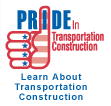





 |
 | |
    | ||
|
|||
     |
Increased Federal Highway & Mass Transit Investment Levels in Reauthorization of TEA-21 Key to Addressing Nation's Growing Transportation Needs, ARTBA Says
Washington, D.C. [September 30, 2002]—An annual federal highway investment of up to $60 billion is necessary to ensure the nation's traffic congestion does not get worse, the American Road & Transportation Builders Association (ARTBA) told a congressional panel today. That should be the minimum target investment level for Congress to consider when it begins debate on reauthorization of the Transportation Equity Act for the 21st Century (TEA-21) next year, ARTBA said. "Reauthorization legislation must begin to address traffic congestion because of its growing impact on business productivity and the future economic growth of the nation," ARTBA Vice President of Economics & Research Dr. William Buechner said. ARTBA pegged its investment targets to the levels expected to be in the U.S. Department of Transportation report to Congress later this year on the condition and investment needs of the nation's surface transportation system. Buechner, a Harvard-trained economist who served the Joint Economic Committee of the U.S. Congress for nearly two decades before joining ARTBA, outlined the association's plan for the post-TEA-21 highway and transit programs at a hearing called by the Senate Environment & Public Works Subcommittee on Transportation, Infrastructure and Nuclear Safety. The ARTBA "Two Cents Make Sense" proposal calls for more efficient cash management of Highway Trust Fund revenues combined with small annual adjustments in the federal motor fuels excise user fees. The ARTBA plan would double federal investment in highway and mass transit capital improvements by 2009. It would ramp up federal highway investment in $5 billion per year increments from $35 billion in FY 2004 to $60 billion in FY 2009. Federal transit investments would increase $1 billion per year under the plan, to almost $14 billion in FY 2009. "The ARTBA proposal is the only one that would bring us to an investment level that would maintain current physical and safety conditions and assure that traffic congestion will not get materially worse over the next 10 years," Buechner said. The ARTBA plan would annually index the federal motor fuels excise to the Consumer Price Index and then further adjust the federal highway user fee rate, depending on incoming revenues to the Highway Trust Fund, by a penny to a penny-and-a-half per gallon. At most, the total annual adjustment, including indexing, would be about two cents per gallon. The year-to-year rate would either rise, or drop slightly, depending on the strength of the revenue stream to the trust fund. "The federal government should be collecting no more money from the nation's motorists than is absolutely necessary to pay the government's annual cash outlay for the highway and transit improvement programs," Buechner said. "This would assure that the federal highway program would be completely budget neutral and would have no impact on the federal surplus or deficit." ARTBA, which
is based in Washington, D.C., exclusively represents the transportation
construction industry, both public and private sectors, in the Nation's
Capital. The industry generates $200 billion annually in U.S. economic
activity and sustains 2.5 million American jobs. ARTBA marks its 100th
anniversary this year. ### Editors Note: The oral presentation of Dr. William Buechner's testimony:
Meetings & Events | Join ARTBA | Members-Only | Foundation Programs About ARTBA | Search | Site Index | Industry Links | Home |
|||||||||||||||